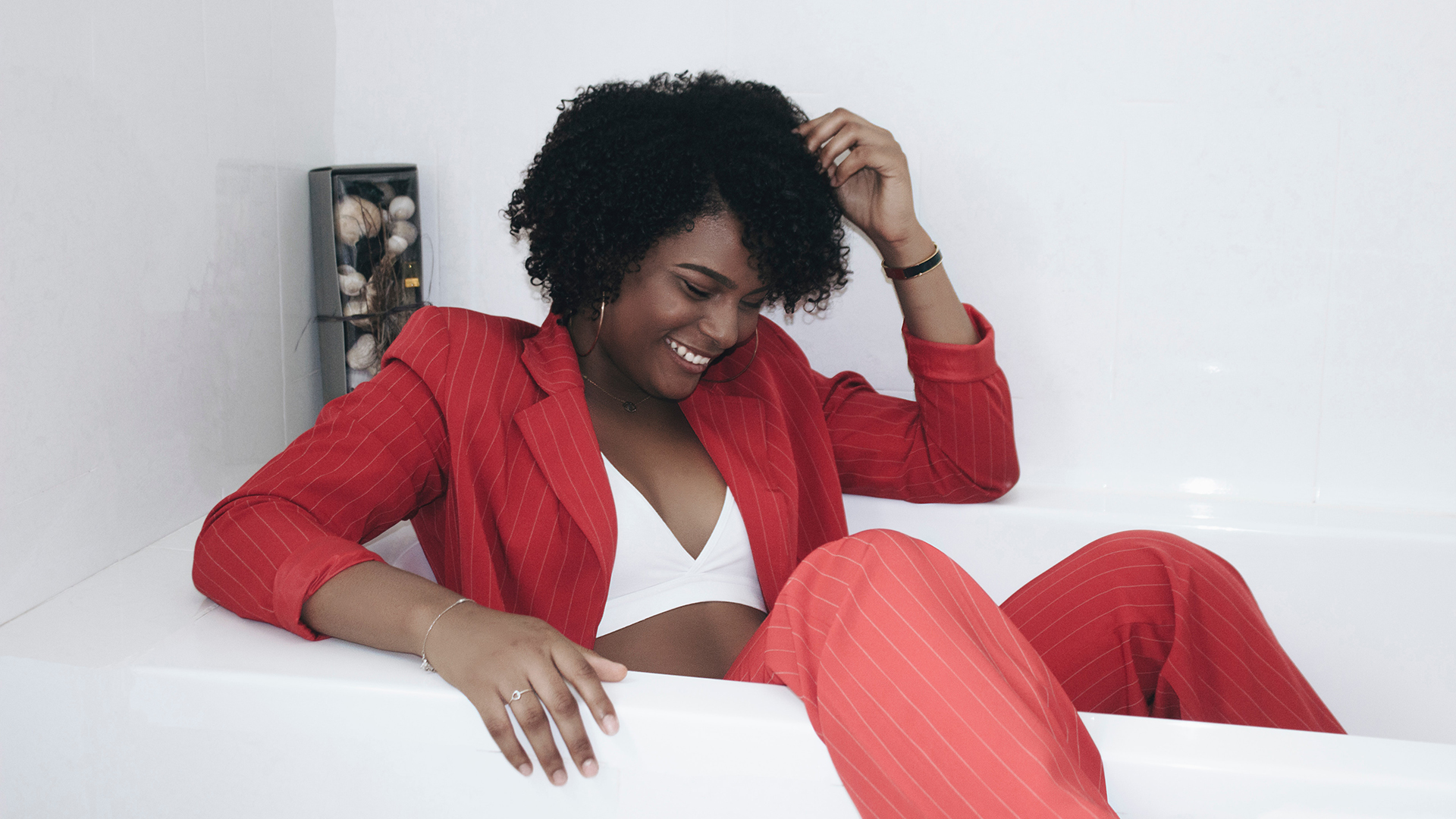The secret to establishing the perfect curly hair routine is first understanding all there is to know about your curl type.
The worst thing that you can do as a curly girl or naturalista is approach your hair care routine with a “one size fits all” attitude – everyone’s hair is different and just because certain products work for another person whose hair looks similar to yours, doesn’t necessarily mean that you’ll be able to accomplish the same results.
Taking the time to learn more about your curl type and hair needs will do wonders in helping you curate the perfect lineup of hair products.
So let’s get right into it – what are the different curl types?
The curl classification system was established by Oprah Winfrey’s hair stylist, Andre Walker. It breaks curl types into four categories. Type one for straight hair, type two for wavy hair, type three for curly hair, and type four for coily hair. From there, the categories are broken down into subcategories A,B, and C, to distinguish specific curl patterns. Take a look at the image below to better establish which curl pattern your hair possesses.
Once you’ve identified your curl type, you are one step closer at determining which products will work best for styling your hair and addressing its needs.
What To Know About Type 2 Hair
Type 2 hair features loose waves that require products that can control frizz and maximize the definition of the hair. Avoid using heavy oils or creams that will weigh hair down or make it look extremely greasy.
Styling 2A Waves
To begin styling 2A waves, you’ll want to be sure to grab a detangling spray to moisturize and easily separate the hair strands. Next, apply a moisturizing gel to the hair by using your fingers to comb through the strands. This will ensure that the hair is frizz free, soft, and shiny looking. Lastly, reach for a lightweight, texture spray to give the hair volume and control for the day.
Styling 2B Waves
For 2B waves, you’ll want to start by reaching for a hair milk and finger combing it through the strands as well. This will ensure hydration and definition to the hair, but also allows your follow up products to better adhere to the strands. If your hair requires more hydration, follow up with a defining cream. If not, grab a hair jelly and rake the product through your hair from roots to ends. Be sure to scrunch the hair and diffuse for added volume.
Styling 2C Waves
Begin by also finger combing the hair with hair milk, then follow up by using a curl cream and finger coiling the hair. (Finger coiling is “twisting the hair section by section around your finger.”) This will better define your hair’s waves. Finish off by diffusing the hair to enhance its texture and volume.
What To Know About Type 3 Hair
The most important thing to remember when styling and taking care of category 3 hair is to keep the hair hydrated. Reaching for oils, deep conditioning treatments, gels and creams are great for working with category 3 hair.
Styling 3A Curls
It’s best to style 3A curls while they are wet. This will minimize frizz and allow products to fully work into the hair. Reach for a curl defining cream, and use a wide tooth comb to distribute the product throughout the hair. You can either end by scrunching the hair while it’s still wet, or by diffusing the curls until they’re about eighty percent dry.
Styling 3B Curls
3B curls need a bit more hydration than 3A curls. Start by reaching for a leave-in conditioner while the hair is still wet, and distribute the product by using a detangling brush. Lastly, finger comb a lightweight oil through the strands to minimize frizz and add shine.
Styling 3C Curls
Reach for a controlling gel to begin styling 3C hair. Be sure to work in sections as this makes things easier, and the product will work to shape and define curls without weighing them down. After you’ve applied the gel, be sure to shake out the strands to activate the hair’s natural curl pattern. Finish by using a microfiber towel to rid the hair of any excess moisture, and diffuse the hair on low heat and low speed.
What To Know About Type 4 Hair
Type 4 hair is not as porous as other hair types, so it’s harder for the strands to absorb moisture. It’s important to remember to thoroughly massage products into the hair so that they can be absorbed and give way to defined coils.
Styling 4A Coils
While the hair is soaking wet, reach for a gel cream and apply it from the roots to the tip of the hair in a raking motion. This will hydrate the hair and define its coils without leaving them hard and crunchy. Next, grab a curl enhancing mousse to further lock in that definition and follow up by diffusing the hair. Lastly, lock things in by misting hair oil all over the strands.
Styling 4B Coils
Start by sectioning off the hair and applying a moisturizing leave-in conditioner. Use your fingers to distribute the product, then follow up with gel and mousse to lock the hydration in and hold those defined coils.
Styling 4C Coils
4C coils require the most hydration. Be sure to reach for a replenishing deep conditioner on your wash days, and follow up by styling with leave-in conditioner, gel, mousse and oil to lock definition in and keep your strands hydrated. To better preserve curls, consider wearing a satin bonnet to sleep or switching your cotton pillowcases over to satin.
